Search results for: 'For'
-
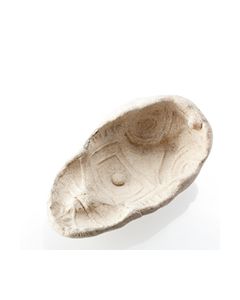 Maya-Kultur - Gussform für Fabelwesen
Maya-Kultur - Gussform für FabelwesenDie Form ergibt ein stilisiertes Tier oder ein Fabelwesen. Rückseite flach. Etwa 300 n. Chr. bis 900 n. Chr.
Price: on request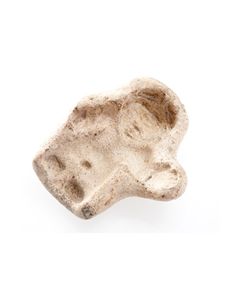 Maya-Kultur - Gussform für männliche Figur
Maya-Kultur - Gussform für männliche FigurForm ergibt eine gedrungene männliche Figur mit erhobener Hand und angedeutetem Phallus. Deutliche Gesichtszüge und Kopfbedeckung.
Price: on request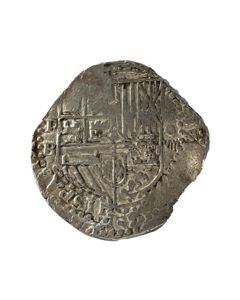 8 Reales, also known as cob coin, piece of eight or pirate money
8 Reales, also known as cob coin, piece of eight or pirate moneyPotosi, Bolivia. Very fine, rare quality and preservation for a cob coin.
Price: on request 8 Reales, also known as cob coin, piece of eight or pirate money
8 Reales, also known as cob coin, piece of eight or pirate moneyCharles II, Potosi (Bolivia) 1687. Very fine, great patina. Nice quality and preservation for a cob coin.
€1,300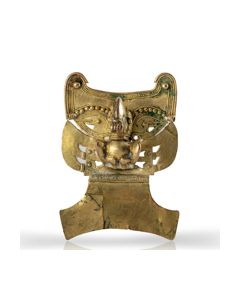 Gold figurine of an eagle from Colombia
Gold figurine of an eagle from ColombiaMagnificent example of the pre-Columbian Tairona culture, which produced the most impressive gold works of ancient America. In mythology, the eagle brought the seeds for one of the main crops, cassava. Made between 900 and 1550 AD.
€8,500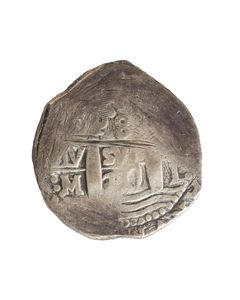 Rare 8 Reales cob coin
Rare 8 Reales cob coinLima, struck 1717 under Philipp V. Very fine, nice quality and preservation for a cob coin. Also known as piece of eight or pirate money.
Price: on request 8 Reales, also known as cob coin, piece of eight or pirate money
8 Reales, also known as cob coin, piece of eight or pirate moneyPotosi, Bolivia. Very fine, nice quality and preservation for a cob coin. This type of coins is also known as pieces of eight or pirate money
Price: on request 8 Reales, also known as cob coin, piece of eight or pirate money
8 Reales, also known as cob coin, piece of eight or pirate moneyPotosi, Bolivia. Very fine, nice quality and preservation for a cob coin.
Price: on request Gourd shaped bowl of the Chimú culture
Gourd shaped bowl of the Chimú cultureElegant bowl with shiny black surface. Precolumbian pottery of the 10th to 15th century.
Price: on request Jaguar vessel of the Guanacaste-Nicoya peoples
Jaguar vessel of the Guanacaste-Nicoya peoplesThe imposing vessel shows not just a jaguar but a transformed shaman in his animal form. It was made in Pre-Columbian Mesoamerica between 800 and 1200 AD and used for funeral purposes in the Guanacaste region.
Price: on request Jama-Coaque roller stamp
Jama-Coaque roller stampClay roller stamp with rich ornamental relief to apply skin decoration. This tool was used in the early phase of the ecuadorian Jama-Coaque culture.
Price: on request Stone Age spearhead from North America
Stone Age spearhead from North AmericaFinely crafted flint projectile from the Stone Age of North America. From a swiss museum collection.
Price: on request Stone Age spearhead from North America
Stone Age spearhead from North AmericaFinely crafted flint projectile from the Stone Age of North America. From a swiss museum collection.
Price: on request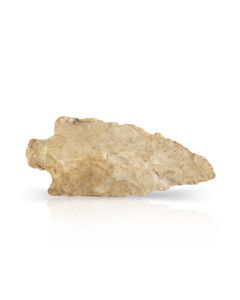 Stone Age spearhead from North America
Stone Age spearhead from North AmericaFinely crafted flint projectile from the younger Stone Age of North America. From a swiss museum collection.
Price: on request Pre-Columbian mask of the Colima
Pre-Columbian mask of the ColimaExpressive and life-sized face mask from the Early Classic period of Mexico. From the museum collection of Washington University.
€5,660 Stone Age spearhead from North America
Stone Age spearhead from North AmericaFinely crafted flint projectile from the Stone Age of North America. From a swiss museum collection.
Price: on request Mochica stirrup vessel as a monkey
Mochica stirrup vessel as a monkeyDistinctive vessel in the shape of a monkey. Typical Peruvian flask made circa 100 to 500 AD. With documents form the 1980ies.
€2,600 Mochica stirrup vessel as a shaman
Mochica stirrup vessel as a shamanImposing Peruvian vessel shaped like a priest on a podest with rich adornments. Circa 100 to 500 AD. With documents form the 1980ies.
Price: on request Pre-Columbian gold earrings from Colombia
Pre-Columbian gold earrings from ColombiaMatching pair of gold earrings from the Zenú culture. Dating to the 1st millennium. Elegant gold jewellery, once worn as earrings by the Zenú people.
€12,000 Large ceremonial knife of the Sican culture
Large ceremonial knife of the Sican cultureThe so-called Tumi was a weapon to cut the throats of humans and animals in ritual sacrifices. The knife certainly fulfilled an additional representative function in the afterlife. From the period of the Sican's cultural florescence during the 10th to 12th centuries AD.
Price: on request Ceremonial knife of the Sican culture
Ceremonial knife of the Sican cultureThe so-called Tumi was a weapon to cut the throats of humans and animals in ritual sacrifices. The knife certainly fulfilled an additional representative function in the afterlife. From the period of the Sican's cultural florescence during the 10th to 12th centuries AD.
Price: on request Small ceremonial knife of the Sican culture
Small ceremonial knife of the Sican cultureThe so-called Tumi was a weapon to cut the throats of humans and animals in ritual sacrifices. The knife certainly fulfilled an additional representative function in the afterlife. From the period of the Sican's cultural florescence during the 10th to 12th centuries AD.
Price: on request Huge ceremonial knife of the Sican culture
Huge ceremonial knife of the Sican cultureThe so-called Tumi was a weapon to cut the throats of humans and animals in ritual sacrifices. The knife certainly fulfilled an additional representative function in the afterlife. From the period of the Sican's cultural florescence during the 10th to 12th centuries AD.
€515 Ceremonial knife of the Sican culture
Ceremonial knife of the Sican cultureThe so-called Tumi was a weapon to cut the throats of humans and animals in ritual sacrifices. The Tumi certainly fulfilled an additional representative function in the afterlife. From the period of the Sican's cultural florescence during the 10th to 12th centuries AD.
Price: on request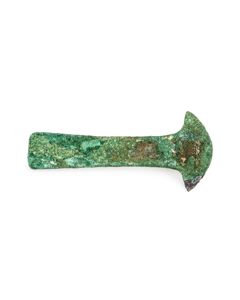 Ceremonial knife of the Sican culture
Ceremonial knife of the Sican cultureThe so-called Tumi was a weapon to cut the throats of humans and animals in ritual sacrifices. The knife certainly fulfilled an additional representative function in the afterlife. From the period of the Sican's cultural florescence during the 10th to 12th centuries AD.
Price: on request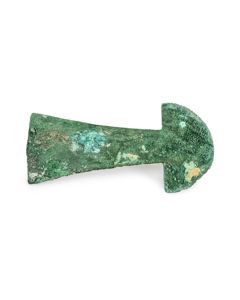 Large ceremonial knife of the Sican culture
Large ceremonial knife of the Sican cultureThe so-called Tumi was a weapon to cut the throats of humans and animals in ritual sacrifices. The knife certainly fulfilled an additional representative function in the afterlife. From the period of the Sican's cultural florescence during the 10th to 12th centuries AD.
€420 Tall idol of the Mezcala culture
Tall idol of the Mezcala cultureThe highly stylized figure of a man in museum-worthy condition. Made from beautifully grained andesite. Late Preclassic of Mesoamerica.
€15,000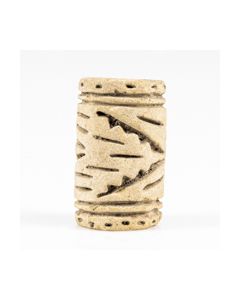 Jama-Coaque roller stamp
Jama-Coaque roller stampClay roller stamp with relief of stylized plants used to apply skin decoration. This tool is from the early phase of the ecuadorian Jama-Coaque culture.
Price: on request Jama-Coaque roller stamp
Jama-Coaque roller stampClay roller stamp with relief of plants to be applied as skin decoration. This tool was used in the early phase of the ecuadorian Jama-Coaque culture.
Price: on request Gold figurine of a flute player from Panama
Gold figurine of a flute player from PanamaA fine gold work once worn as a pendant around the neck by an elite. The small male figure was made by a largely uniform Panamanian culture, right before the old crafts disappeared under the influence of the Spaniards.
€8,800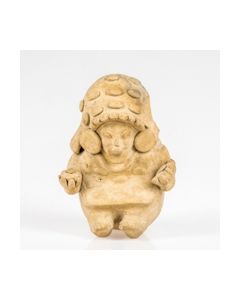 Sculpture of a Jama-Coaque chieftain
Sculpture of a Jama-Coaque chieftainThe clay figure from the earliest phase of the Jama-Coaque culture shows the preparation of coca leaves. Including TL test from Kotalla laboratory.
Price: on request Pre-Columbian gold earrings from Colombia
Pre-Columbian gold earrings from ColombiaMatching pair of gold earrings from the Zenú culture. Dating to the 1st millennium. Impressive gold jewellery, once worn as earrings by the Zenú people.
€8,000 Pre-Columbian gold earrings from Colombia
Pre-Columbian gold earrings from ColombiaMatching pair of gold earrings from the Zenú culture. Dating to the 1st millennium. Impressive gold jewellery with highly stylized waterbirds. Once worn as earrings by the Zenú people.
€6,000 Stirrup vessel as a water bird
Stirrup vessel as a water birdPlastically shaped vessel from the Peruvian Chimú culture, showing a water bird. From the 15th century. With TL report from 1979.
€910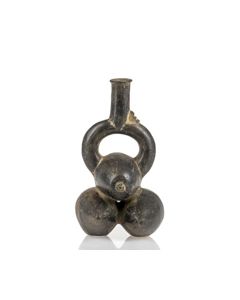 Stirrup vessel in the shape of cacao fruits
Stirrup vessel in the shape of cacao fruitsPlastically shaped vessel from the Peruvian Chimú culture. It embodies an important agricultural product of the pre-Columbian civilization of Chimor. With TL report from 1979. Part of a special exhibition from 2024 to 2025.
€1,600 Mochica stirrup vessel of a dignitary
Mochica stirrup vessel of a dignitaryImposing Peruvian vessel shaped like a man with cloak in his hands. Circa 100 to 500 AD. Exhibited multiple times and published.
€3,050

